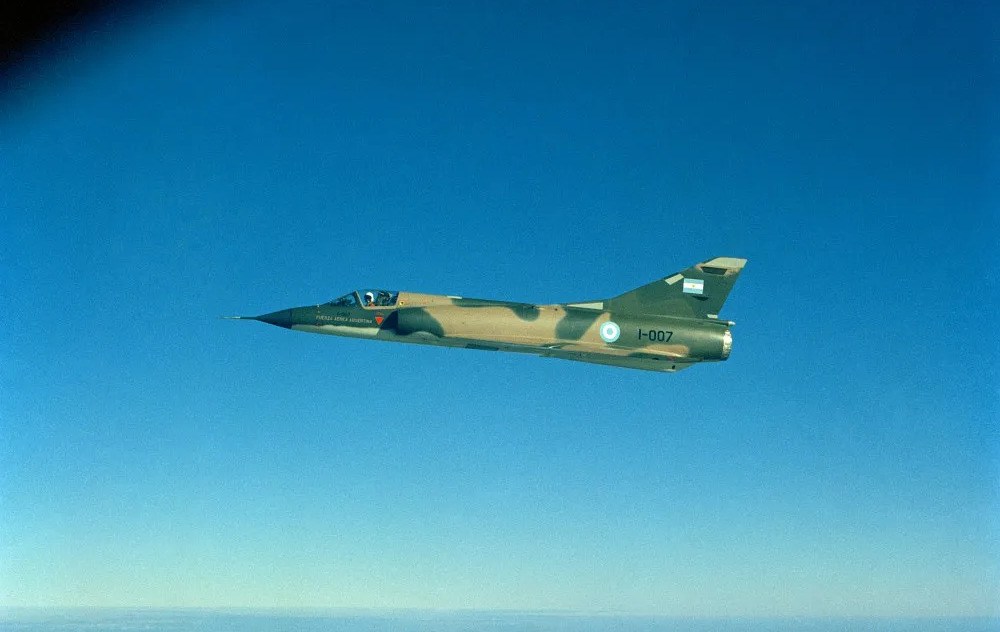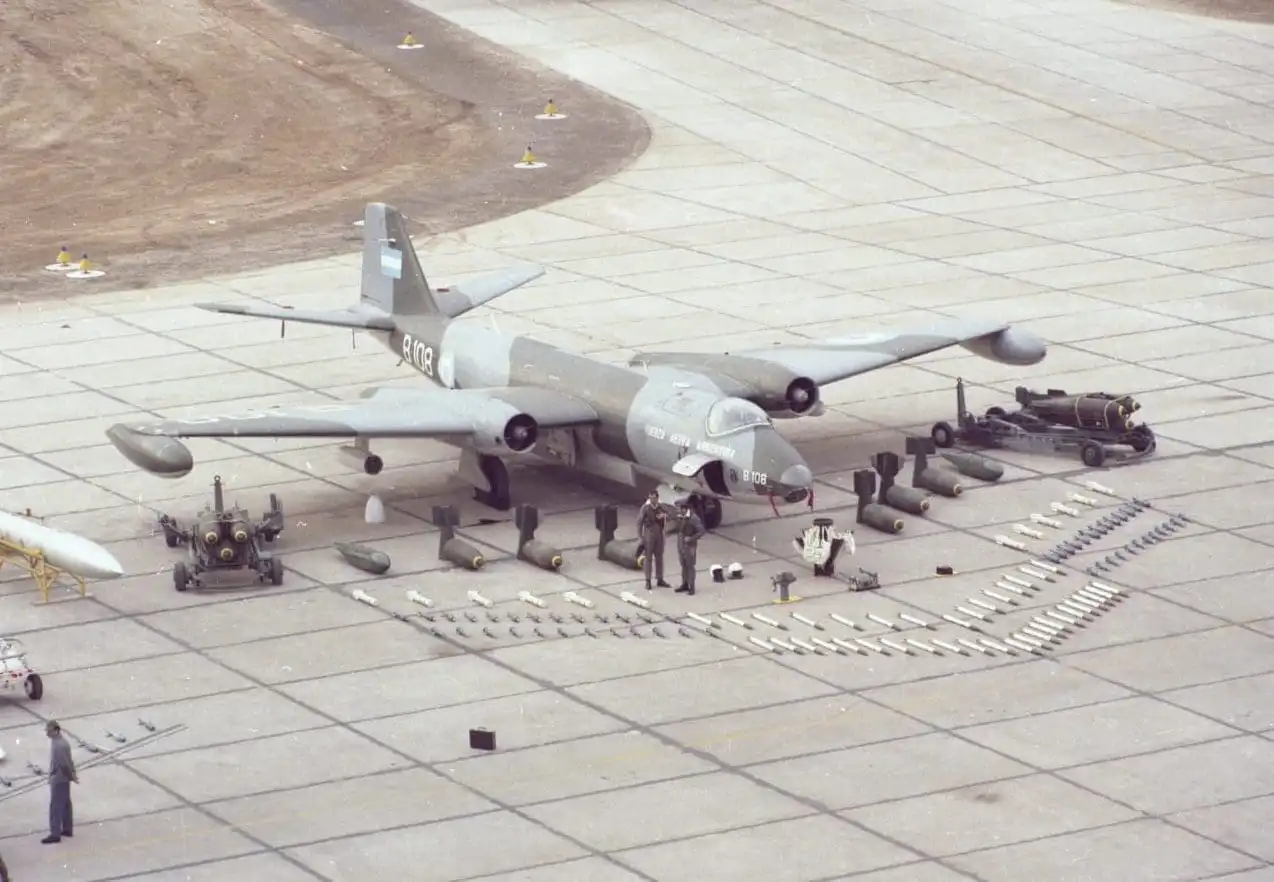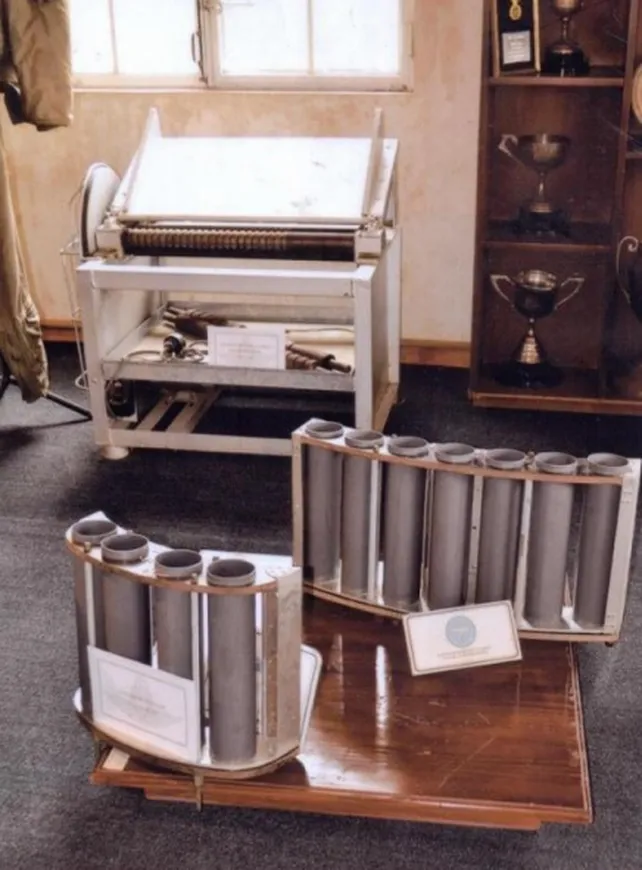During the war for the Falkland Islands in 1982 against Great Britain, the combat aviation of the Argentine Air Force did not have any regular means at all to protect its aircraft from air-to-air missiles and anti-aircraft missiles from British ships.
Therefore, the Argentine pilots had to independently make and experiment with improvised means of self-defense of their aircraft, within the framework of which even a pasta-making machine, which was used to cut dipole reflectors, was used.
This is stated in the publication of the Argentine researcher Mariano Scaroni, which is cited by the American The War Zone.

Briefly, the content of this extensive publication can be described as follows. To explain to what level the combat aircraft of the Argentine Air Force did not have any means of protection against British missiles at all, there is an example: when, after the Falklands War, one of the pilots of the US Air Force asked his Argentine colleague how he and his brothers in arms felt when an enemy missile was approaching, he replied that “nothing, because we did not have the appropriate equipment on the aircraft.”
The fact is that although Argentina had a fairly diverse fleet of combat aircraft before the start of the Falklands War, which included, in particular, A-4 Skyhawk, Mirage III and IAI Dagger aircraft, as well as old British Canberra jet bombers, none of these “boards” had missile danger warning equipment, onboard electronic warfare equipment, or at least “heat traps” against missiles with infrared seekers.
The reason for this looks rather prosaic – since Argentina’s neighbors did not have powerful combat aircraft, the government in Buenos Aires believed that it was possible to “save money” on the self-defense of its aircraft; some plans to modernize and install appropriate facilities with the participation of France and Israel were hatched in the early 1980s, but until the start of the Falklands War in April 1982, these plans were never implemented.

The picture of absurdity is complemented by the detail that the personnel of the Argentine Air Force learned about the beginning of the war “retroactively” when they heard the news about the landing of Argentine troops in the Falkland Islands.
Since there was not much time left, the Argentine aviators also had few available options for at least some protection of their aircraft – to use illumination missiles against the AIM-9 Sidewinder with an infrared seeker, and to use dipole reflectors against naval anti-aircraft missiles with radar guidance.
Several Argentine institutions were active in this direction at once, without coordinating their actions, which, in particular, led to such a paradox – the Argentine military was only concerned with the question of how to make dipoles, without looking for options for how these reflectors could be used in battle.
The scale of activity was such that in a month of work, that is, by May 1982, the Argentine military cut 140 kilograms of dipoles, which were cut literally on “command from above”, mostly by hand.

It was in this context that the story was recorded for the use of a pasta cutting machine, which was “repurposed” to cut dipole reflectors; the author of such know-how was the head of the technical squadron of the 2nd Bomber Air Group, Major Fernando Rezoalli, who was literally ordered by his command to return home precisely to “harvest” the dipoles by all available methods.
The result of the story looks like this – there is no clear evidence of how effective dipoles and illumination missiles were as an improvised means of protection, but it was at least another interesting page in the history of improvised solutions for combat aviation in the second half of the 20th century.

